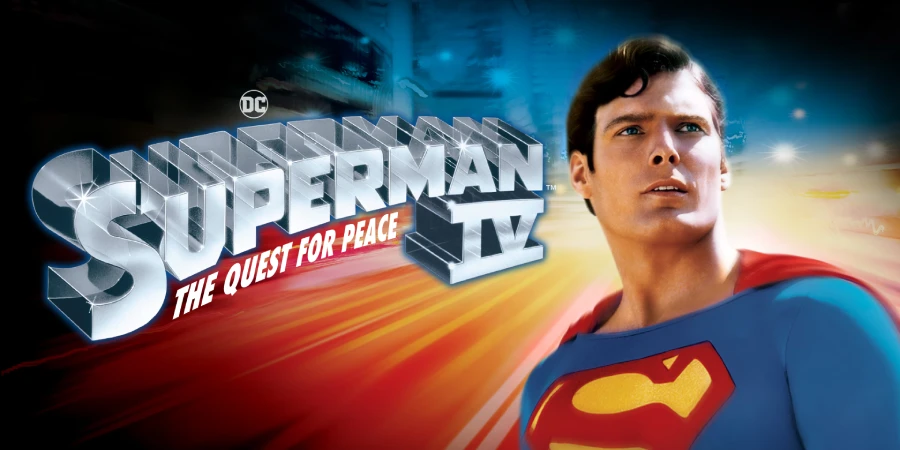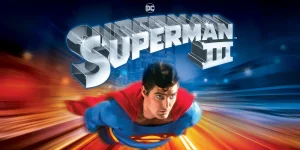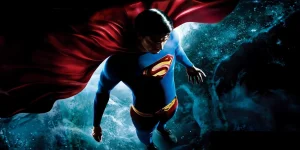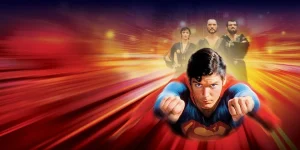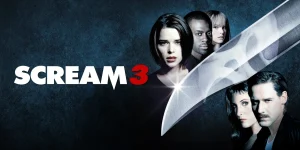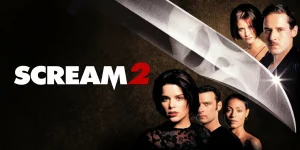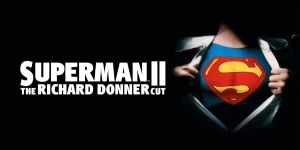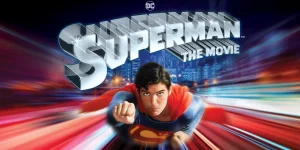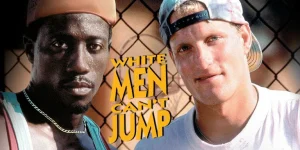Superman IV: The Quest for Peace is the fourth and final installment in the original Superman film series starring Christopher Reeve. Released in 1987, the film was directed by Sidney J. Furie and co-written by Reeve himself. Though ambitious in theme—nuclear disarmament and peacekeeping—it suffered from budget cuts and production troubles, leading to a film that is both infamous and oddly endearing to many fans of the character.
Table of Contents
ToggleDetailed Summary
The World on the Brink
The film begins with Superman (Christopher Reeve) rescuing a group of cosmonauts stranded in space, reaffirming his role as protector of Earth. Meanwhile, back on Earth, the world is in the grip of a renewed Cold War-style nuclear arms race. Children send letters to Superman asking for his help, including a particularly impactful one that prompts him to reconsider his non-interventionist stance on political matters.
Clark Kent’s Moral Dilemma
Clark Kent returns to Smallville after the death of his adoptive mother, Martha Kent. He finds a crystal left by Jor-El that allows him to communicate with his Kryptonian heritage. Torn between his role as a reporter and his role as a global symbol of hope, Superman finally decides to take action on nuclear disarmament.
Superman Goes Global
In one of the film’s most iconic sequences, Superman gathers all of the world’s nuclear missiles and throws them into the sun, eliminating the threat of nuclear war in one fell swoop. However, this act has unintended consequences, especially when the ever-scheming Lex Luthor (Gene Hackman) returns.
Enter: Nuclear Man
Luthor steals a strand of Superman’s hair from a museum and uses it to create a new villain—Nuclear Man, a solar-powered adversary intended to destroy Superman and take over the world. Created from Superman’s DNA and infused with nuclear energy, Nuclear Man emerges from the sun as a fully grown, cape-wearing menace.
Battle for Earth and Love Triangle Shenanigans
While Superman battles Nuclear Man across famous landmarks—such as the Great Wall of China and the Statue of Liberty—Clark also deals with a strange romantic subplot involving both Lois Lane (Margot Kidder) and a new character, Lacy Warfield, whose father has bought the Daily Planet and wants sensationalism over journalistic integrity.
Movie Ending
In the climactic battle, Nuclear Man kidnaps Lacy Warfield and flies her into space—somehow she survives this without suffocating, but we’ll let that one go. Superman, despite being weakened from an earlier exposure to nuclear energy and briefly “dying,” uses the last Kryptonian energy crystal to heal himself.
He defeats Nuclear Man by luring him into an elevator, cutting off his access to solar energy, and dropping the elevator into the core of a nuclear power plant, where Nuclear Man is destroyed by being absorbed into the reactor.
In the final scenes, Superman delivers a powerful speech to the world, reminding humanity that peace is not his to give but something they must achieve themselves:
“There will be peace when the people of the world want it so badly that their governments will have no choice but to give it to them.”
Lex Luthor is once again arrested, and Clark Kent returns to his life as a journalist, still in love with Lois but aware of the distance that must remain between them.
Are There Post-Credits Scenes?
No, there are no post-credits scenes in Superman IV: The Quest for Peace. The film ends with Superman soaring into space, smiling at the camera—classic Reeve charm—before the credits roll.
Type of Movie
Superman IV is a superhero drama with political overtones, leaning heavily into science fiction and moral allegory. It’s less of a traditional action film and more of a message-driven narrative with fantasy elements.
Cast
- Christopher Reeve as Clark Kent / Superman
- Gene Hackman as Lex Luthor
- Margot Kidder as Lois Lane
- Mariel Hemingway as Lacy Warfield
- Jon Cryer as Lenny Luthor
- Mark Pillow as Nuclear Man
- Jackie Cooper as Perry White
- Sam Wanamaker as David Warfield
Film Music and Composer
The score was composed by Alexander Courage, based on John Williams’ original Superman theme. While Courage handled the new material, Williams’ classic themes were repurposed to lend continuity and gravitas to the film. The music stands out as one of the film’s few consistently praised elements.
Filming Locations
- Pinewood Studios (UK) – Main shooting location.
- Milton Keynes, England – Stood in for Metropolis due to budget constraints.
- Cannon Film Studios, UK – Used for indoor sets and miniature work.
The use of Milton Keynes instead of New York City contributed to a strange, sterile look that was widely criticized. Much of the film’s poor reception came from its lack of cinematic scale.
Awards and Nominations
The film was nominated for a Golden Raspberry Award (Razzie) in multiple categories, including:
- Worst Supporting Actor (Jon Cryer)
- Worst Visual Effects
- Worst Original Song (a track that was ultimately cut)
It didn’t win any major film awards and is widely regarded as the weakest in the series.
Behind the Scenes Insights
- Christopher Reeve agreed to do the film only if he could influence the script, particularly to push an anti-nuclear message.
- The budget was drastically cut from $36 million to $17 million during production.
- Special effects were rushed and often reused, including the same flying shot multiple times.
- Gene Hackman returned to the franchise after skipping Superman III, adding star power but not enough to save the film.
- Several scenes were cut, including an earlier prototype of Nuclear Man who looked nothing like the final villain.
Inspirations and References
- The film is heavily inspired by Cold War-era nuclear fears.
- Superman’s actions reflect real-world political debates about nuclear disarmament, with the character acting as a global peacekeeper.
- The character of Nuclear Man has vague connections to various Superman comic villains like Bizarro and Solar Superman, but is an original creation for the film.
Alternate Endings and Deleted Scenes
- An earlier version of the script included two versions of Nuclear Man—the first being a failed clone that Superman defeats early in the film.
- Some test screenings included longer scenes of Superman struggling with the consequences of disarming the world.
- These scenes were deleted to save runtime, and their removal damaged the story’s pacing and thematic depth.
Book Adaptations and Differences
There was a novelization of the film which included much of the deleted content:
- The novel version delves deeper into Clark’s emotional state.
- Nuclear Man is given slightly more intelligence and backstory.
- The disarmament debate is treated more seriously, with global leaders reacting to Superman’s actions in a more nuanced way.
Memorable Scenes and Quotes
Key Scenes
- Superman catching all nuclear missiles mid-air and hurling them into the sun.
- The rooftop scene where Clark reveals his identity to Lois Lane (again) and then erases her memory (again).
- The battle at the Great Wall of China, which Superman “repairs” using unexplained vision powers.
- Nuclear Man dragging the Statue of Liberty through the sky.
Iconic Quotes
- Superman: “I just wish you could all see the Earth the way that I see it. Because when you really look at it, it’s just one world.”
- Lex Luthor: “He’s got everything—and I have nothing but genius and a bald head.”
Easter Eggs and Hidden Details
- The museum housing Superman’s hair was meant to echo the Fortress of Solitude in aesthetic.
- A throwaway line from Perry White mentions the Daily Planet’s history, a nod to its founding in early Superman comics.
- The “double date” scene mirrors one from Superman II, but with less wit.
Trivia
- Mark Pillow, who played Nuclear Man, never acted in a film again.
- Jon Cryer, who plays Luthor’s nephew, would later portray Lex Luthor himself in the Supergirl TV series.
- The film’s visual effects were so poor that many fans believed it was an unfinished version accidentally released.
Why Watch?
Superman IV is worth watching as a cultural curiosity. It’s a sincere, if flawed, attempt to address major real-world issues through a superhero lens. Christopher Reeve’s earnestness gives the film a moral center, and despite its technical failures, it showcases a Superman who genuinely cares about humanity’s future. It’s also an interesting case study in how studio interference can derail a promising idea.
Director’s Other Movies
- The Ipcress File (1965)
- Iron Eagle (1986)
- The Entity (1982)
- Ladybugs (1992)

